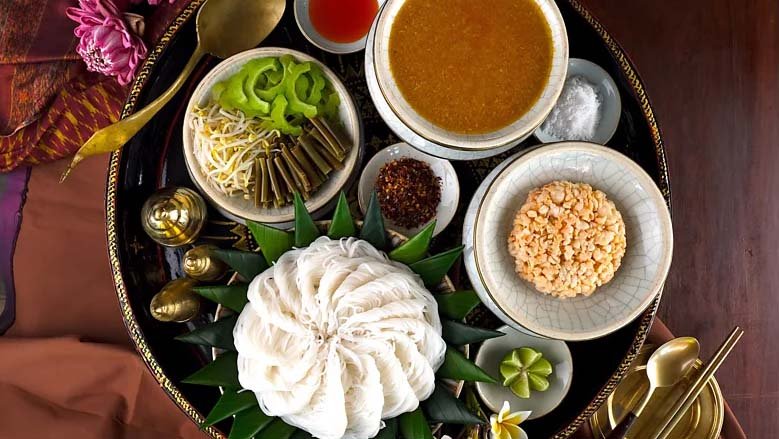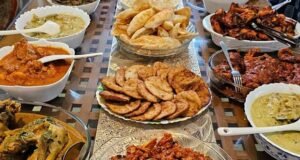
A Cambodian chef is one of a few women looking to revive her culture’s nearly forgotten Khmer recipes; her recent cookbook, Saoy, was named ‘the best cookbook in the world’.
Cambodian (also known as Khmer) cuisine consists of subtle curries and fresh flavours, yet despite its palate-pleasing complexity, it has barely made it onto the international map. In recent years, however, this has begun to change, with contemporary female chefs making it their mission to preserve and share Khmer recipes and ingredients that were nearly lost during the brutal Khmer Rouge period of the 1970s, when many restrictions were placed on local foods, from eating to farming.
Leading the charge is Ros Rotanak, aka Chef Nak, one of Cambodia’s few celebrity chefs. Her fascination with food began as a child, when her mum, lacking a babysitter, used to take her to sell vegetables at Doeurm Kor night market in Phnom Penh. Nowadays, the self-taught chef teaches Khmer cooking classes at her home across the Mekong River from downtown Phnom Pen.
Chef Nak, with infectious enthusiasm, describes the nuances of Khmer cooking. “The flavours are deep but balanced – sweet, salty and sour. We use a lot of sour flavours, more than just lime or citrus. For example, with tamarind, we use both the young leaf and young fruit in soup, in dipping flavours, in stir-fry.”
It was on a trip to the US in 2010 that Chef Nak’s desire to preserve and share Khmer cuisine started to take hold. “It was only after I travelled to the US that I realised that even though some Thai restaurants there are run by Cambodians and serve Khmer food, they don’t call it Cambodian because no one knows about it. That’s what ignited me to find out what’s going on.”
When she returned to Cambodia, Chef Nak embarked on a journey around the country, recording recipes from village elders. Chef Nak gathered those recipes for her 2019 cookbook, Nhum (“Eat” in the Khmer language). Most recently, her 2023 cookbook SAOY – Royal Cambodian Home Cuisine won Best of the Best Cookbook in the World at the Gourmand World Cookbook Awards.
To understand why Khmer cuisine has suffered, Dr Sambo Manara of Paññāsāstra University in Cambodia recalls the terror of the Khmer Rouge, the regime led by Marxist dictator Pol Pot starting in 1975 (termed “Year Zero”). At the time, local culture was systematically destroyed, including cuisine. Even eating at home was considered treacherous as cooking your own food was illegal. “The Khmer Rouge’s restrictions on cooking at home forced many to prepare their food in secret. The consequences of being caught were serious, even fatal.” The majority of people were limited to eating a thin, gruel-like porridge that wasn’t enough to survive and millions of people faced starvation.
Khmer cuisine did not recover easily after the end of the regime in 1979. “In the aftermath of the Khmer Rouge era, there was a shift in culinary preferences among young people, with a growing interest in fast food and dishes influenced by foreign cultures, such as pizza or burgers,” explained Dr Manara. “The declining value of Khmer food resulted in a decrease in the planting of local ingredients.” The locally grown and foraged staples used in traditional dishes became increasingly harder to find, and authentic recipes began to be lost.
 Weekly Bangla Mirror | Bangla Mirror, Bangladeshi news in UK, bangla mirror news
Weekly Bangla Mirror | Bangla Mirror, Bangladeshi news in UK, bangla mirror news







